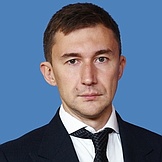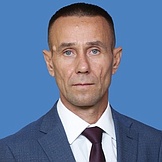Regional flags and emblems


PROFILE
Established 18 March 2014
Capital Simferopol
The Republic of Crimea is part of the Southern Federal District
Area 26,100 sq km
Population 1 901 100 (2025)
Ethnic groups
(2020 National Census, %)
Russian – 72,94
Crimean Tatar – 14,10
Ukrainian – 8,21
Tatar – 1,60
Other – 3,15
Administrative divisions (2024)
Municipal districts – 14
City districts – 11
Rural towns – 4
Rural districts – 250
Geography and climate
The Republic of Crimea occupies the entire Crimean Peninsula, except for the land used by Sevastopol, which has federal city status. In the north, it is connected to the mainland by the narrow Isthmus of Perekop, where it borders on the Kherson Region. It is washed by the Black Sea on the west and south, by the Kerch Strait on the east and by the Azov Sea and its Sivash Bay on the northeast.
The Republic has maritime borders with Romania, Bulgaria, Turkey, and Georgia.
The Crimean Mountains in the south divide the peninsula into the flat northern area (Crimea steppe) and the mountainous southern area (Crimea uplands).
Configuration of terrain: the North Crimean plain with the Tarkhankut Upland; the Kerch Peninsula; and the southern mountainous area. The Main Ridge is the highest range of the Crimean Mountains, with the Roman-Kosh peak (1,545 m). The Internal and External ridges form the Crimean Mountains foothills. Crimea is located on the border of the moderate and subtropical belts, which provides for a mild climate and a large number of sunny hours per year. The coldest month is January (the average temperature is −1.4°C); the warmest month is July (the average temperature is +23°С).
The main rivers are the Salgir, Indol, Biyuk-Karasu, Chornaya, Belbek, Kacha, Alma, and Bulganah. The longest river of Crimea is Salgir, while the the deepest is Belbek. There are more than 50 salt lakes in Crimea.
There are natural parks, state nature reserves, landscape museum parks, dendrological parks, landscape and recreational parks, as well as zoological parks of regional importance.
Government
The legislative branch is represented by the State Council of the Republic of Crimea – the Parliament of the Republic of Crimea, which is the permanent representative and only body of legislative authority in the republic.
The State Council of the Republic of Crimea has 75 deputies elected for five years, with 25 of them running in single-mandate constituencies and 50 in the single electoral district, where winners are identified in proportion to the number of votes cast for lists of candidates nominated by electoral associations.
The current State Council of the Republic of Crimea was elected in September 2024. Its term expires in September 2029.
The executive branch in the Republic of Crimea is represented by the Head of the Republic of Crimea, the Council of Ministers and other bodies of executive authority of the republic. The Council of Ministers of the Republic of Crimea is the supreme and permanent body of executive authority in the republic.
The Head of the Republic of Crimea is the highest-ranking official, who leads the executive branch and determines the system and structure of the executive agencies in the Republic of Crimea. He is elected by the members of the State Council of the Republic of Crimea for a term of five years. The term of the incumbent Head expires in September 2029.
Economy and natural resources
The republic's mineral resource potential includes deposits of raw materials for the production of building materials, fossil fuels and energy, drinking, technical, mineral and thermal waters, along with metallurgical and chemical raw materials. Oil, natural gas and gas condensate deposits are found on shore and in the adjacent waters of the Black and Azov Seas. Fresh and slightly mineralised groundwater is scattered across Crimea. Medical mineral muds are found in salt lakes.
About 184 species and subspecies of fish are found in the Azov and Black Seas and in the lower reaches of the rivers that flow into these seas; 25 of them commercial.
Industry, tourism, construction, healthcare and agriculture show the fastest growth in the republic’s economy. Industrial output accounts for about 18% of the regional GDP. The structure of industrial production is dominated by food, chemicals, and shipbuilding; hydrocarbons and electricity generation make a significant contribution as well.
The largest industrial enterprises of Crimea are Moret Shipyard (warships), Zaliv Shipyard, Chernomorneftegaz (oil and gas), Massandra (winery), the Crimean soda plant (a soda maker), Titan Investment (Armenian Branch), Fregat (Kerch naval shipyard) and the Fiolent plant.
There has been an increase in mineral extraction, production and distribution of electricity, gas and water.
Agriculture accounts for over 13% of the regional GDP. Agriculture meets the population's needs for most foodstuffs.
Most agribusinesses specialise in crop production − pome fruits (apples, pears), stone fruits (plums, peaches, apricots, and cherries), essential oils (rose, lavender, sage) and livestock breeding.
The oldest farming branch in Crimea is viticulture. Crimea is famous for its grape varieties, which are used to produce high-quality wines, cognacs and juices.
The Republic of Crimea and the city of Sevastopol are part of a free economic zone.
The most capital-intensive investment projects currently being implemented within the free economic zone are in power engineering, transport and the spa and resort industry.
Culture and tourism
An effective spa and resort industry remains one of the priorities of Crimea’s development. It relies on the use of mineral waters, therapeutic muds, climatic and landscape resources, sea and mountain air.
Crimea, the ancient land of Cimmerians, Hellenes, Scythians, and Taurians, has a wealth of historical and cultural landmarks.
Simferopol is the capital of Crimea, the centre of business and cultural life of the region. The Scythian Naples, the capital of the ancient Late Scythian state was established there in the 3rd century BC. There are many museums in Simferopol, many Orthodox and Muslim churches, but most of all, parks and gardens.
Kerch is Crimea’s sea gate and one of the oldest cities in the world, just one year younger than the great Rome. The ruins of Panticapaeum Ancient City, the capital of the Bosporan Kingdom, tell their own story. The city centre is dominated by Mount Mithridates, named after King Mithridates VI Eupator Dionysius, who ruled the Bosporan Kingdom more than two millennia ago.
Feodosia is famous for its endless sandy beaches, the ancient Genoese fortress and the world-famous Aivazovsky art gallery.
Koktebel is a picturesque corner of Crimea, a place loved by Russian bohemia, who visited the house of poet Maximilian Voloshin there. Poet Marina Tsvetayeva was a frequent guest at Voloshin’s.
Not far from Koktebel is Mount Klementiev, a popular venue for the sport of gliding.
Sudak, the western capital of the Great Silk Road, is a rich market town that has survived much historical turmoil. The formidable stones of the Genoese Fortress keep age-old memories of Greek and Italian rule, of the brave Slavs and the terrible Turkish raids.
Yalta was the favourite city of the Romanov family, who built their famous Livadia Palace there.
The Saki medical lake is a famous deposit of therapeutic mud and brine.
Yevpatoria welcomes guests to its sandy beaches and shallow waters with plenty of entertainment for children.
The Khan’s Palace in Bakhchisarai is a unique medieval architectural heritage piece, the only example of the palace architecture of the Crimean Tatars. One courtyard contains the Fountain of Tears, whose sad story so moved Alexander Pushkin that he wrote a narrative poem about it.


